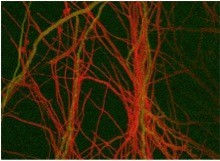Selaginella genome project on redOrbit
Grigoriev noted that the Selaginella genome helps fill in a large gap in plant evolution from the unicellular green alga Chlamydomonas, sequenced at the DOE JGI and published in 2007, to flowering plants with vascular systems. “Selaginella occupies a phylogenetically important position for which we had no reference,” he said. “On one end of the… [Read More]

